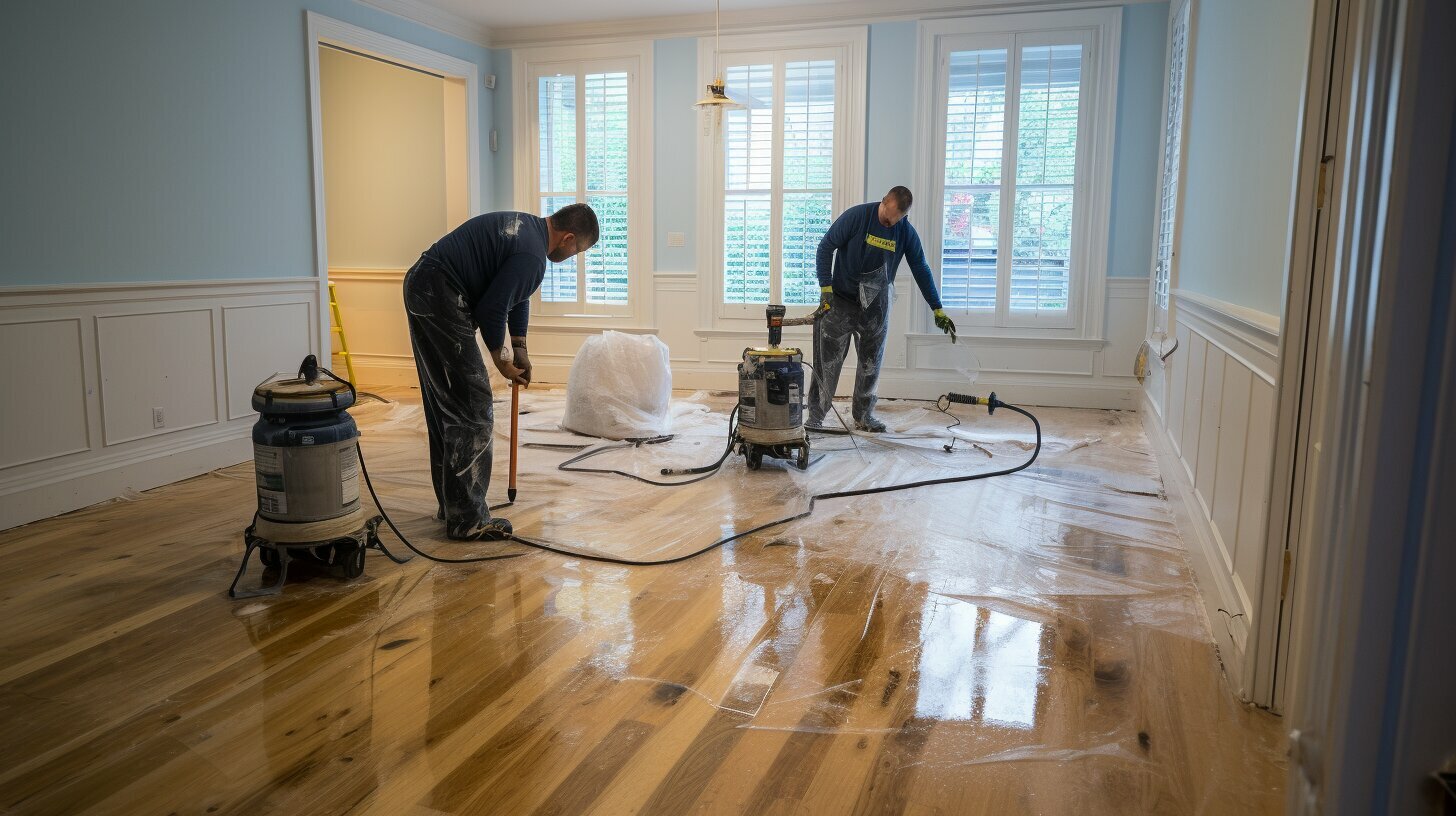Water under laminate flooring is a Buffalo homeowner’s worst fear. It can come from a leaky pipe, a spilled drink, or an overflowing appliance. Water can warp, buckle, and even cause mold to grow on beautiful floors.
Water can get under flooring for many reasons. This includes poor installation, flooding, or accidents. If not fixed, it can lead to expensive repairs, health risks, and lower property value.
Key Takeaways
- Water under NY flooring can lead to warping, buckling, and mold growth.
- Common causes include leaky pipes, spills, and flooding.
- Prompt action is necessary to prevent further damage.
- Poor installation can increase the risk of water seepage.
- Ignoring water damage can result in costly repairs and health hazards.
- Water damage can significantly decrease Buffalo, NY, property value.
What Happens If Water Gets Under My Buffalo Flooring?
It’s important for homeowners to know how water damage under flooring works. Water can cause floors to warp, buckle, and grow mold. This can harm the floor’s look and strength.
There are many reasons water might get under flooring. Spills, high humidity, and leaks are just a few. These can let water seep under the floor, causing damage if not fixed quickly.
Water under flooring can lead to several problems:
- Warping and buckling of the flooring material due to moisture absorption
- Mold and mildew growth, which can pose health risks and further damage the flooring
- Deterioration of the subfloor, potentially leading to structural issues
Finding where the water damage is coming from is key. Homeowners should look for moisture signs, check for leaks, and keep homes well-ventilated. Knowing about water damage can help protect floors and homes.
Identifying Signs of Water Under Flooring in Buffalo, NY
There are clear signs that show water is under your flooring. It’s important to spot these signs early to avoid more damage.
Look out for dark spots, warped boards, and a peeling finish. Also, check for loose boards and squeaky floors. These signs might be small, but a close look can show how bad the damage is.
Visual Inspection
Checking your floor visually is key to finding water damage. Start by looking for any signs of water damage on your floor.
- Look for discoloration or darkening of the flooring.
- Check for warped or buckled boards.
- Inspect the finish for blisters or peeling.
- Check for loose or uneven boards.
- Notice any squeaky spots when walking on the floor.
Using a moisture meter can also help find out how much damage there is. By spotting these signs and doing a detailed check, you can fix the problem quickly.
How to Fix Water Damage Under Different Flooring Types
Fixing water damage under various flooring types requires a few important steps. First, you need to find out where the water is coming from to stop more damage.
To fix water damage, follow these steps:
- Identify and address the source of the water damage.
- Remove the affected flooring to assess the extent of the damage.
- Dry the subfloor thoroughly to prevent mold growth.
- Check for mold growth and address it if necessary.
Fixing Water Damage Under Hardwood Flooring
Hardwood flooring needs quick action. Remove the damaged planks and dry the subfloor. If the damage is too much, you might need to replace some sections.
Fixing Water Damage Under Laminate and Tile Flooring
For laminate and tile, remove the damaged parts, dry the subfloor, and look for any hidden problems that led to the damage.
Preventing water damage is important. Check your flooring often for water damage signs and fix any problems right away.
By following these steps and staying proactive, homeowners can fix water damage under different flooring types and avoid future problems.
Conclusion: Preventing Water Damage to Your NY Floors
Keeping water away from your floors is key to their health and life span. Knowing the dangers of water under flooring shows why we must act early.
Regular checks can spot problems before they get worse. Placing mats and rugs in wet spots, like entryways and by sinks, helps a lot. Also, cleaning spills right away stops water from getting under the floor.
Opting for water-resistant flooring, like luxury vinyl or porcelain tiles, adds extra protection. By doing these things, homeowners can greatly lower the chance of water damage. This keeps their floors safe and strong.
Revive Your Property with Green Genie in Buffalo, NY
From water damage restoration to mold remediation, Green Genie delivers fast, professional, and eco-friendly solutions tailored to your needs. Restore your space and peace of mind—request your free consultation today!







